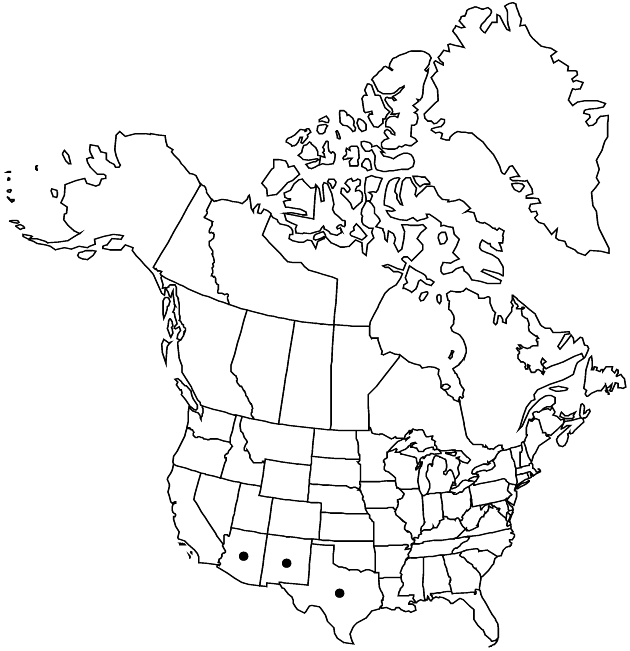Acourtia nana
Phytologia 27: 230. 1973.
Plants 2.5–30 cm, (divaricately branching). Leaves cauline; sessile; blades rhombic-orbiculate to suborbiculate, 10–50 mm, bases cuneate, margins coarsely and irregularly prickly-dentate, faces glabrous (reticulate). Heads borne singly (at branch tips). Involucres campanulate, 14–17 mm. Phyllaries in 4 series, broadly ovate, margins glandular, apices acute to mucronate, abaxial faces glabrous. Receptacles reticulate (sockets separated by squarish, apically pubescent paleae 1 mm). Florets 15–24; corollas lavender-pink or white, 10–17 mm. Cypselae subcylindric, 3–7.5 mm, densely stipitate-glandular; pappi white or tawny, 10–15 mm. 2n = 54.
Phenology: Flowering (Mar–)Apr(–Jun).
Habitat: Gravel, sandstone, silty, or caliche soils in desert scrub
Elevation: 0–1800 m
Distribution

Ariz., N.Mex., Tex., Mexico (Chihuahua), Mexico (Coahuila), Mexico (Nuevo León), Mexico (San Luis Potosí), Mexico (Sonora), Mexico (Zacatecas)
Discussion
Acourtia nana grows primarily in the trans-Pecos and western Edwards Plateau.
Selected References
None.